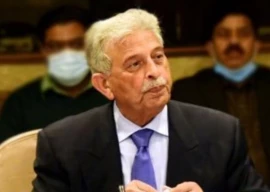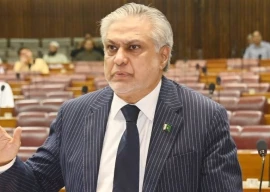
As the monsoon season draws closer, the fear and anxiety of the people residing in the rural areas of the federal capital are rising. Come July, the torrential rains, as forecast, will wash away the summer blaze, as well as the fragile link between the rural areas and the urban centre of the capital city for which the Islamabad Capital Territory (ICT) administartion seems to be unprepared.
For the upcoming monsoon season, the ICT is yet to finalise a strategy to cope with any disaster in the adjoining areas of the capital.
These areas also host the two main water reservoirs of the twin cities, Rawal and Simly dams. When the water level in these dams reaches the highest point during monsoon, the spillways are opened. And this is often done without proper coordination among concerned departments.
Only last year several people lost their lives after a flash flood caused by the discharged of water from Korang and Rawal Dam, met the people unprepared. Other damages to the infrastructure of the city and the private property have also been huge.
But, the city administration is yet to bring forth a plan to show preparedness against such ‘monsoon troubles’.
Last year, around Rs830.252 million worth of losses were incurred in the suburbs of the capital due to the havoc wrecked by the rain. A number of crossing bridges, streets and roads along with the “riverside” were damaged in the rural areas of the twin cities. The most affected union councils were that of Sohan, Bhara Kahu, Phulgran, Tumair, Kurri, Kirpa, Tarlai, Chirah, Shah Allah Ditta, Koral, Sihala and Rawat.
After the floods, ICT conducted a survey and declared 21 small riverside roads as ‘dangerous’ and proposed to make 53 bridges in different union councils at the cost of Rs1.3 billion. Initially, Rs53.7 million was allocated for the designing and survey purposes. Source told The Express Tribune that ICT failed to follow up on these projects despite a “heavy” monsoon season last year which caused human casualties as well as collateral damage.
An official added that the ICT failed to “repair” the damage caused by the monsoon rains even though it was provided the funds by the interior ministry to do so.
On the other hand, Pakistan Meteorological Department (PMD) has forecast the monsoon season would start from first July which will continue till September. Director General Met office, Arif Mahmood told The Express Tribune that the major areas where more rain is expected in the upcoming monsoon were Punjab, Khyber-Pakhtunkhawa and Kashmir.
“These are the areas where more rain is expected as compared to the others parts of the country,” he added. On July 30 last year, four people lost their lives in the two union councils (UC) of the city due to the devastation of the rainwater.
Deputy Commissioner Islamabad Amir Ali Ahmed said that he has called a meeting on June 20, to discuss the preparations for upcoming season. All the stake-holders including the Met officials and dam authorities are expected to take part in it.
“After taking them into confidence, we will adopt a Water Management Policy (WMP) to avoid any untoward incident,” he added. He said that last year, ICT proposed construction of 53 bridges, however due to financial crunch they were not approved.
“In the recent budget, establishment of only 10 bridges has been approved and construction would start very soon,” he added
On the issue of uncoordinated release of water from the dams, Ahmed said, “We will restrict the civic body not to discharge the water from the dams without taking ICT into confidence.”
Published in The Express Tribune, June 17th, 2011.

































1714024018-0/ModiLara-(1)1714024018-0-270x192.webp)









COMMENTS
Comments are moderated and generally will be posted if they are on-topic and not abusive.
For more information, please see our Comments FAQ